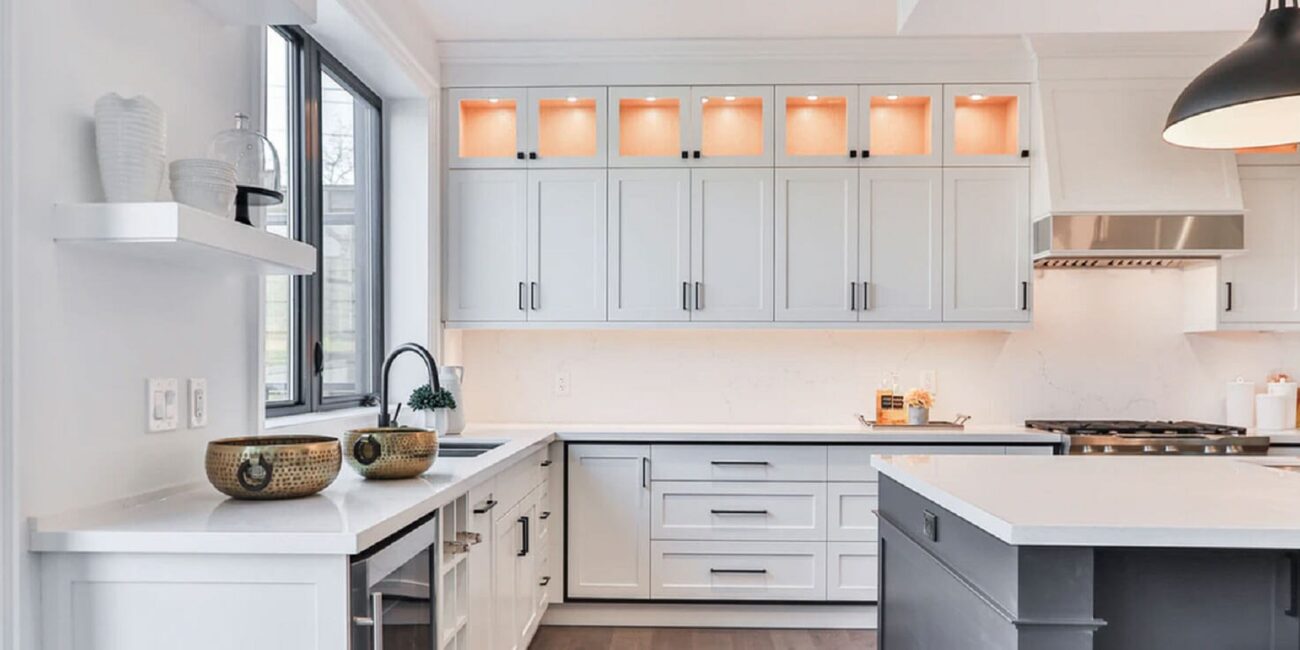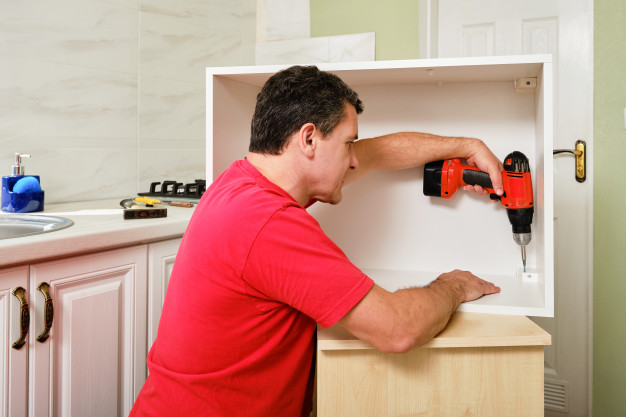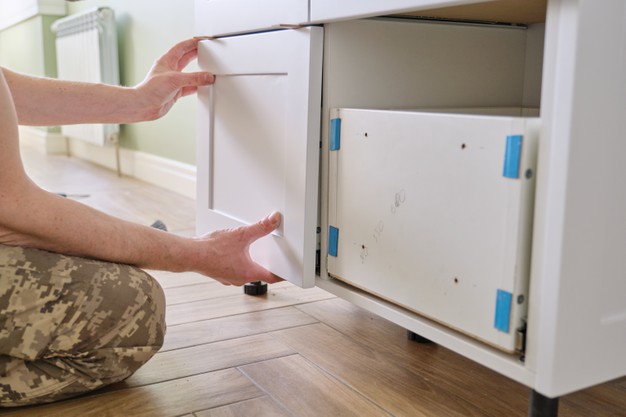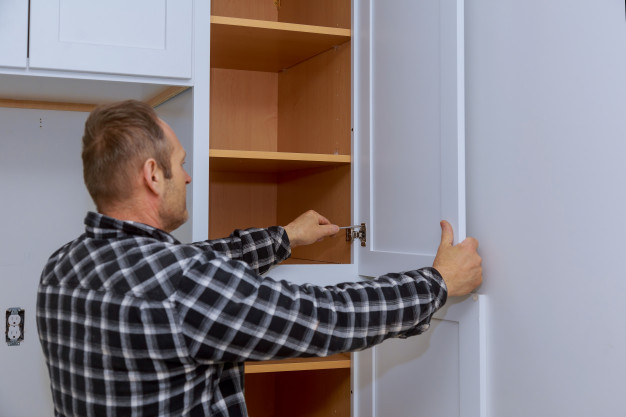How to install wall cabinets without studs | step by step Guide for an Easy Installation

Suppose you want to redesign your old home. And to make more space in your old home, you are going to position a new cabinet. Now you don’t know if your old house’s studs will support your new size of the cabinet or not? To place a cabinet without studs, you need to know some basic things. That is how many ways you may install it and the things you need to do this task. Keep to the following guide on how to install wall cabinets without studs | step by step guide for an easy installation.
For this placement, the primary wall hanging tools and supplies you need are-
- Drill
- Drill bits
- Screwdriver
- Hammer
- Level
If you have collected these tools, follow these steps and start the installation process.
Know the easy process of how to install the wall cabinet without studs:
When you set up the brackets, you may easily set the cabinet into the wall. Screw the cabinet at the top side of it. And you may also use glue at the back part to make it more secure. If you set more than one, then screw them with one another. But make sure you set the brackets correctly on which your cabinet sits.
Proper screw placement is the key to secure a heavyweight wall cabinet. The technique also lies in distributing the weight properly and selecting the right number and types of screws. So to solve your problem of how to install wall cabinets without studs here are few steps followed by some methods:


Step-1: Determine your cabinet’s weight
Solve your problem of how to install wall cabinets without studs below,
First, you need to determine the weight of the cabinet you want to hang on. You may do it in two ways.
- You may ask to measure the weight to the shopkeeper. Sometimes they have the big scale to measure products.
- Or you may use your bathroom scale. First, you step onto the plate with the product. And then you step onto the scale without product. Then take away the second symbol from the first one to get the proper weight.
Step-2: Select the exact drywall anchor
You will find various types of drywall anchors. In each type, there are also different weight-bearing grades.
Weight-bearing grades for-
- A drywall anchor is-30-5- lbs
- A toggle bolt is more than 60 lbs.
- A steel toggle bolt is more than 75 lbs.
- A snap toggle is more than 150 lbs, and a flat drywall hook is more than 200 lbs.
Step-3: Draw the screw holes
Select the site and make an eyeball with a pencil. To hang a wall cabinet, you need several screw holes. When you put a series of shelf brackets, you need several screw holes at a precise location. As the consistent height is a must, However, it is wise to use a scale to measure the points very carefully. It will provide a perfect looking wall cabinet for you.

Step-4: Make pilot holes into the wall
The next step is to make a pilot hole into the wall. The pilot hole ensures that the anchor will go inside the wall very smoothly. It makes your installation more precise. It is straightforward to insert the wall anchor using pilot holes.
- You may need to tapped into the drywall with a hammer to fix it
- Or screw up into the wall.
The instruction will be in the packets.
When you are making a pilot hole, you may follow a few methods.
Method-1:
Measuring and drilling:
- Measure the length of your cabinet. Sometimes you will find it is listed over the packet.
- Save the measurement for further use. Remember it, and brackets are placed at the end position of your cabinet’s length.
- Apply the measure to that particular wall space and figure out the place you will set your brackets,
- Select a specious wall to form your cabinet. Note that there will be no windows or doors or any other obstacles to hamper your setup.
- If you set multiple cabinets side by side, you need to fix that vertically. Also, plan for them.
- Now hold the cabinet on the wall with the help of another person. Mark the two endpoints and align them as much as possible.
- Use a scale or bubble level to mark the points precisely. Then make sure the guideline is straight. Thus when you hang your cabinet, it will be straight and positioned. If you have two or three cabinets set side by side, make guidelines for them also.
- Now, you have to choose the right brackets to mount on the wall. Brackets for heavyweight have multiple holes. So the placement of screws is essential.
- When drilling in the wall, keep in mind that there may be electrical wires, wood framing. Or other components. So drill gradually.
Method-2:
Use of drywall anchor:
- When you shop for the drywall anchor, check the weight limit. They came in different sizes. The biggest one can bear 14-23 kg that is 30 -50 lbs.
- When setting the wall anchor, screw them clockwise. If you need quick installation, use the drill machine.
- To make secure installation check the brackets are well-secured with the wall. For that, you need to hold the frames with the wall and fit the screw into each hole. Use a screwdriver or drill to fix them with the anchor.
- Be sure you purchase the perfect size screw for the mounting brackets. Mostly the screws are sold with the frames. But sometimes the situation may be different.
Warning:
Don’t tighten the screw too much. It may strip the threads; you will not be able to remove them later.
Method-3:
Molly bolt installation:
- The molly bolts have a metal tip at the end of them. When you push it into the wall, make sure that the bolt shafts are flat and unopened. The tip will emerge at the opposite side of the wall and fit into the wall perfectly.
- Few moly bolts have flanges at the tip that ends at the opposite side of the wall. Close up the bolt when you put it through the pilot hole.
- The most positive thing about the moly bolt is it sets very well in the drywall and the plaster wall.
- They can generally support up to 23 kg or 50 lbs. So you have to count how many moly bolts you need to secure a cabinet by decentralizing the weight.
- Then screw them with a Phillips screwdriver. Stop spinning the bolt once you feel resistance.
- Then remove the molly bolts from the wall and collect them for reuse.
- Now, set the brackets to the moly bolts.
Warning:
Continuous rotation may damage the screw and the wall.
Method-4:
Using toggle bolts:
- This one is the best option to hang something heavy on the wall. They usually can bear up to 23 kg, but some bolts may carry more than that.
- They also work very well in the drywall and the plaster.
- Hanging toggles have a metal tip at the endpoint and the plastic strap on the other end.
- Few metal spring toggles are works like moly bolts.
- Break the extra part of the plastic and screw the brackets into the wall.
Warning:
Over tightening may hamper the bolt and the wall both.
Conclusion:
Undoubtedly, wall studs, the wooden frame inside your wall, give you super easy preferences to set a wall cabinet. But sometimes wall studs are not in the same line where you want to hang the cabinet.
How to install wall cabinets without studs | step by step guide for an easy installation has the solution for you. Drywall anchor is one of the best solutions for you. You plug this plastic screw into the drywall.
If you are trying to set your cabinet into a plaster wall, you need the molly bolt to bear the weight. And you may pick the toggle bolt if you have more weight.



Comments(0)